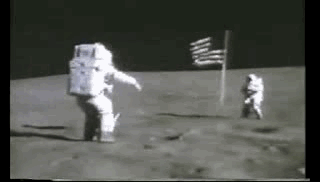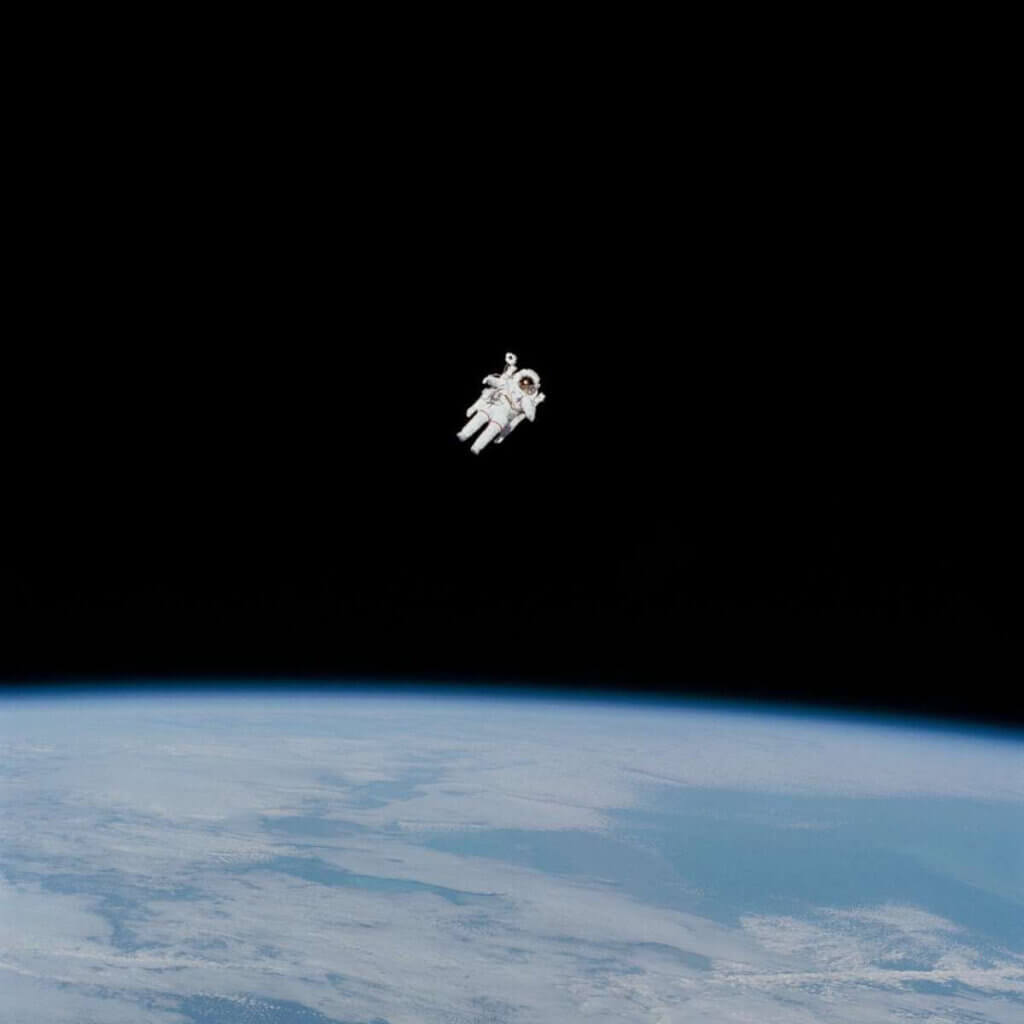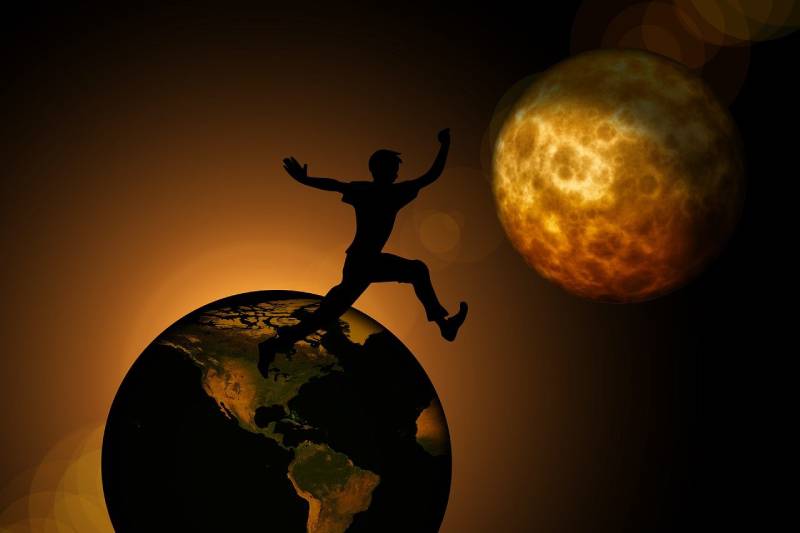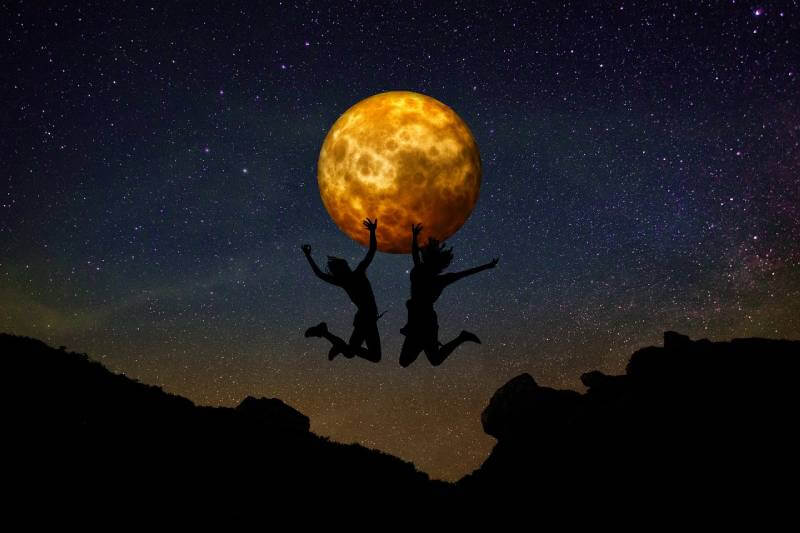The moon has its own gravitational effect on the lunar surface. According to NASA scientists, the gravity on the moon is approximately 1.62 meters per second squared, whereas the Earth’s surface has a gravitational pull of 9.8 meters per second squared.
That means the effect of gravity on the lunar surface is around a sixth of what it is on our planet. It’s also why astronauts can bounce around on the moon during a lunar landing. Gravity affects the weight of objects, and when gravitational pull is weak, the object weighs less.
However, gravitational inconsistencies exist on the moon’s surface due to the “Bouguer” anomalies. The GRAIL mission launched by NASA measured this gravitational anomaly, discovering they result from mantle or crust density or crustal thickness variations. So, some areas of the moon’s lunar surface have a stronger gravitational pull than others.
During the 1969 Apollo landing on the moon, astronauts needed to learn the aspects of walking on the lunar surface to compensate for the lower gravitational effect of the moon compared to the Earth. That’s why you see them “hopping” as they traverse the lunar terrain.
If they tried to walk on the moon like on Earth, they would bounce into the air and fall over. During the lunar landing experience, the Apollo astronauts learned the skill of moonwalking practically, resulting in plenty of falls.
How High Can You Jump on The Moon?
Gravity relies on mass; the more mass, the more force or pull is created. This relationship affects the weight of objects and, in terms of people, how high we can jump on the moon or the Earth. Earth is 81 times larger than the moon and, thus, has less of a gravitational pull on objects on the lunar surface.

The average human is capable of jumping around 9 feet in the “air” on the moon, while just 1.5 feet on the Earth’s surface. If you tried the same feat on Jupiter, you’d only reach 6 inches.
Near Jupiter, the most massive planet, you’d only achieve 6 inches, while on Martian moon Phobos, a jump would launch you straight out into space. A 180 lbs human only weighs around 30 lbs on the moon, so there’s less gravitational resistance holding you back when you jump.
Can You Jump on the Moon and Float Off into Space?
While you can jump 6 times higher on the lunar surface than on Earth, you can relax knowing you won’t float off into the dark abyss of space if you give your jump everything you’ve got. To float off into space, you’d have to jump with an acceleration force of 2 kilometers per second to escape the moon’s gravitational pull.

Javier Sotomayor is the fastest jumper of all time, and even he can only manage a speed of 7 meters per second, reaching a height of 2.45 meters. Javier also stood over 6 feet tall. If Javier jumped on the moon, he’d have enough power and force to jump clear over the average American suburban home but not enough to escape the moon’s gravitational grip on his body. Jumping speed doesn’t depend on gravity; it relies on skill and strength.
But what about insects like fleas? Fleas jump higher than any other insect. On Earth, these pesky pests can jump 4 inches into the air – that’s quite a feat considering they measure only a fraction of that in size. So, wouldn’t a flea be able to escape the moon’s gravitational pull and float off into space?
No. A flea, while being able to jump very high for its puny size, doesn’t jump at a rate of speed greater than that of a human. The white-tailed jackrabbit can jump over 18 feet into the air, which means they could reach the height of a ten-story building on the lunar surface, but they wouldn’t have the speed to be able to escape the moon’s gravitational pull.
How Far Can You Fall on the Moon Without Being Injured?
So, what height would you have to fall from on the moon to incur an injury from the fall? If we look at the averages on Earth, the average conditioned human will sustain an injury if they fall from a height of 20 feet or more.
In microgravity environments, the human skeletal system loses bone mass daily due to the effects of living in space. Astronauts lose significant weight while aboard the ISS and must exercise for 2.5 hours a day to retain their muscle mass.
So, the astronaut on the moon will be less well-conditioned for the shock sustained by an impact after a fall. But that depends on the time spent in a microgravity environment. A 20-foot fall on Earth will result in an approximate fall velocity of around 11 meters per second.

To achieve the same results on the moon, an astronaut would have to fall from a height of around 130 feet to sustain a serious injury. However, if we consider the loss of bone mass from living in space, the distance might be much lower than that figure.
The moon’s gravity not only affects how high astronauts can jump on the moon, but it also affects the rate of speed of the fall. The less gravitational pull on the astronaut, the slower the descent. The strength of the gravitational force on an astronaut’s body experienced on the moon depends on the density of its mass.
For instance, if you have two objects with identical mass, but one is smaller and denser than the other, the smaller object will fall at a faster rate on the moon.
As an interesting fact, if you compressed the Earth into a ball 0.7 inches in diameter, it would be so dense it would cause gravitational collapse, resulting in the theoretical formation of a black hole. Right before that occurred, if an astronaut stood on the Earth as it shrank to that smaller size, they would weigh over a billion tons.
In Closing
Humans can jump around 9 feet into the air on the lunar surface, but it’s not usually that high because the astronauts aren’t trying to give it everything they’ve got. They’re just concerned with moving around efficiently on the moon and are fine with bobbing along at a slow pace.

